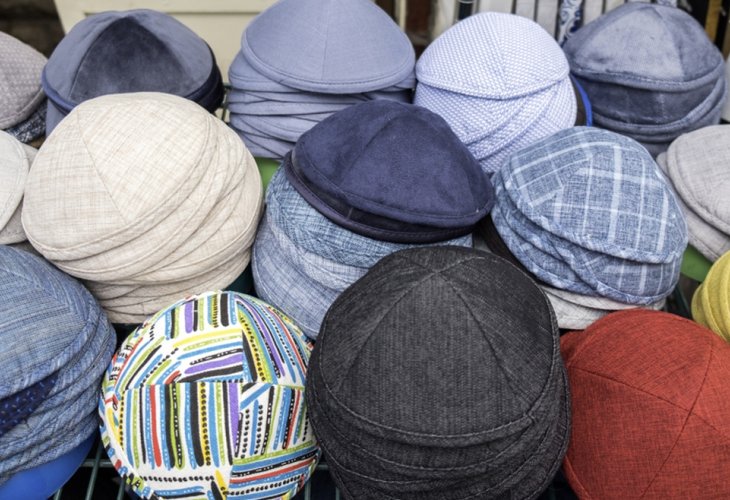Beginners Guide
The Beginner's Guide: Must I Wear a Kippah?
Is head covering a halachic obligation or a custom?
 (Photo: shutterstock)
(Photo: shutterstock)In the past, the common practice was to wear a kippah (skullcap) only during prayer or while engaging in spiritual activities, and only those who wanted to go above and beyond the minimum, seeking to draw closer to the Creator, would wear a head covering throughout the entire day.
Over time, however, the practice of wearing a kippah all day became widespread among the general public, to the point that it became an established custom, obligatory for all Jewish men. There is a debate among halachic authorities whether wearing a kippah is a strict obligation or an act of piety (midat chassidut). The opinion of the late Rabbi Ovadia Yosef zt”l is that although, strictly speaking, it is considered an act of piety, in our times one should be more stringent, since wearing a head covering demonstrates one's affiliation with Torah-observant Jews.
It is important to know that when mentioning G-d's Name (such as when reciting a blessing), it is halachically required to have the head covered, whether with a kippah or another type of covering (Shulchan Aruch, Orach Chaim 91:3).
Covering the head is considered a sign of “fear of Heaven”- an acknowledgment of a Higher Power to whom one is subservient. The purpose of the kippah is to bring a person to humility and awareness of their place in the world. Our Sages teach that wearing a kippah is not only a requirement, but also a spiritual aid that strengthens reverence for G-d. Therefore, it is appropriate for every person to be meticulous in wearing a kippah at all times. By fulfilling this mitzvah properly, we merit awe of Hashem and adherence to His commandments.
The Shulchan Aruch rules that the kippah not limited to prayer: "A person should not walk four cubits (approx. 2 meters) with an uncovered head" (Orach Chaim 2:6). Rabbi Yisrael Meir of Radin, in his work Mishnah Berurah, expands on this halacha, stating that it is certainly forbidden to recite a blessing or study Torah with an uncovered head. Indeed, this was the practice throughout the Jewish world- even in places where wearing a kippah in public was avoided out of fear of non-Jews, during prayer or Torah-related activities, a head covering was always worn.
The Taz also writes that today, not wearing a kippah is prohibited due to the Torah's commandment: "You shall not walk in their statutes" (Vayikra 18:3), referring to adopting non-Jewish customs.
The kippah should be worn both indoors and outdoors. A widely followed custom is to wear a kippah even at night while sleeping.
Among all the mitzvot and symbols of Jewish identity, the kippah stands out as a primary marker of how a person identifies: Am I a religious, observant Jew, or someone who feels no obligation to obey G-d?
By wearing a kippah, we make a clear declaration: We are children of Hashem our God, and it is our duty to observe His commandments and uphold His Torah. A person who does not wear a kippah is withholding that declaration from themselves.
A man who is not wearing a kippah may not recite a blessing or pray with an uncovered head. Therefore, when saying a blessing or praying, it is not sufficient to simply place a hand on one’s head, but the head must be covered with something that is not part of the body. One may stretch a sleeve over the head, place a towel or napkin on it, and even a paper tissue can suffice in a pinch.
Although there are many different types and styles of kippot—from the classic black kippah, to the crocheted (kippah serugah), to the colorful and large Bukharian kippah- there is no significant halachic difference between them. You can wear a black, white, colorful, knitted, or fabric kippah—even one made from cardboard—all are valid as long as the head is covered.
A kippah does not need to cover the entire head. Even a very small kippah is halachically considered a head covering. However, it is strongly recommended that the kippah be large enough so that anyone looking at the person from any angle can immediately see that he is wearing a kippah—thus reinforcing the statement: Hashem is King, and we are His servants.
The obligation to wear a kippah applies to every Jewish male and every boy from the age of chinuch (education), around age 6.
It is customary in all Jewish communities to put a kippah on a child's head from age 3, during the chalaka (first haircut) ceremony.
What made journalist Arale Segal return a kippah to his head? To read more, click here.
Ofer Hadad, reporter and news anchor on Channel 2, decided to put the kippah back on after several years away. To read his words, click here.

